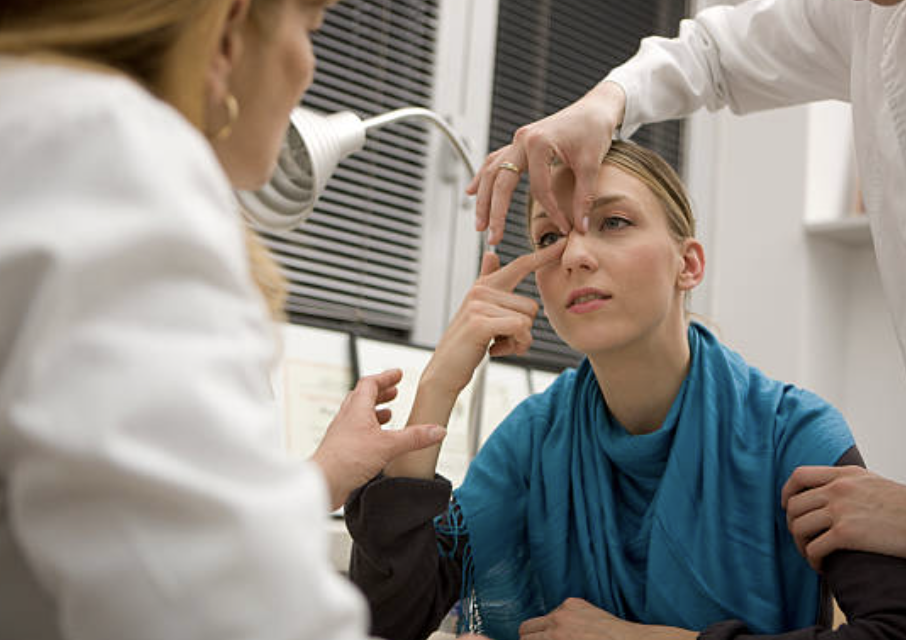Rhinoplasty in turkey has moved from a niche option to the front-runner for travelers comparing surgery abroad. The shift isn’t hype. It comes down to price transparency, surgeon specialization, and hospital quality that’s easy for international patients to verify.
In this guide, we compare Turkey and Mexico side by side so you can choose with confidence.
Contents
- 1 Quick Verdict for Busy Readers
- 2 Why Rhinoplasty in Turkey Often Wins
- 3 Costs and What You Actually Get
- 4 Surgeon expertise and case volume
- 5 Hospitals, accreditation, and safety nets
- 6 Outcomes and aesthetics
- 7 Travel logistics that impact recovery
- 8 When Mexico can still make sense
- 9 How to choose the right clinic in Turkey
- 10 Realistic timeline and recovery checklist
Quick Verdict for Busy Readers
Turkey is winning because packages are clearer, surgeon subspecialization is easy to verify, and hospital infrastructure caters to international patients. If you want bundled care, revision options, and a predictable week on the ground, rhinoplasty in turkey is a strong pick. Choose Mexico if proximity and Spanish-language comfort are your top priorities.
- Packages in Turkey usually include surgery, anesthesia, hospital stay, hotel nights, airport transfers, and a translator.
- Case volume and subspecialties like ultrasonic rhinoplasty and revision rhinoplasty are common.
- Major private hospitals in Istanbul and Antalya support international patient units and ICU access.
- Aftercare is structured with clear follow-ups and remote checks.
- Travel is longer for many, but itineraries are standardized for recovery.
Why Rhinoplasty in Turkey Often Wins

Why is Turkey better than Mexico for Rhinoplasty?
Many travelers pick rhinoplasty in turkey for transparent package pricing, high case volume among specialist surgeons, hospital accreditation, and built-in aftercare. Mexico remains competitive on proximity and language. If you compare inclusions and surgeon portfolios side by side, Turkey often delivers more predictability for the total trip.
At a glance
- Clear packages with hotel and transfers
- High volume in primary and revision rhinoplasty
- Access to JCI hospitals Turkey and ICU backup
- Widespread ultrasonic rhinoplasty capability
- Structured aftercare with remote support
Costs and What You Actually Get
Cost is not just a single number. It’s surgery, anesthesia, facility fees, hotel, local transport, meds, and follow-up. Turkey’s packages tend to state these out loud. Mexico sometimes lists a surgery fee first, then adds extras as you plan. The apples-to-apples comparison is what matters.
Typical Rhinoplasty Package Pricing in Turkey vs Mexico
In Turkey, bundle pricing is common for medical tourism. You’ll often see a single quote that covers consultation, surgery, anesthesia, hospital stay, hotel nights, airport transfers, and a translator. In Mexico, clinics may quote surgical fees up front and list lodging and transfers as options. Either model can work. The key is a detailed inclusions list.
Package inclusions comparison
| Item | Turkey packages (typical) | Mexico packages (typical) |
| Pre-op consult | Included | Included |
| Surgery + anesthesia | Included | Included |
| Hospital stay | Included | Included or add-on |
| Hotel nights | Often included (3–7) | Often separate |
| Airport transfers | Included | Often separate |
| Translator | Included | Varies |
| Medications/garments | Sometimes included | Sometimes included |
Use this table to compare quotes for Turkey rhinoplasty and Mexico rhinoplasty without surprises.
Add-ons that change the bill
Your total can change if you need septal or ear cartilage grafts, if the surgery becomes a complex revision rhinoplasty, or if your surgeon recommends piezo ultrasonic instruments for bone work. Extended hotel stays, flight changes, or extra imaging are other common add-ons. Ask for a written list before you book.
Value, not just price
Price is the sticker. Value is the outcome, the aftercare, and any touch-up policy. In Turkey, clinics often bundle early follow-ups and offer clear escalation paths. Some include a limited warranty or discounted revisions when indicated. Read the fine print and keep every email. It pays off if you need support later.
Surgeon expertise and case volume
Rhinoplasty looks delicate because it is. Results depend on the surgeon’s specific experience, not only brand names or tools. Turkey’s draw is the number of surgeons who focus on nasal surgery full time, handle complex cases, and publish large case libraries. That consistency is why many travelers choose rhinoplasty in turkey.
Why volume matters for primary and revision rhinoplasty
High case volume builds pattern recognition. Surgeons who operate on many noses each week see more anatomy types, more cartilage behaviors, and more healing patterns. This helps with planning, risk control, and results. It is even more important for revision rhinoplasty Turkey, where scarring and grafts demand extra skill.
Subspecialties to look for
Aim for surgeons who list functional and cosmetic work on the same page: septoplasty for a deviated septum, valve repair, and cosmetic changes like tip refinement. Ask about ultrasonic rhinoplasty Turkey for precise bone reshaping when indicated. It’s not a must for everyone. It’s a tool that helps in select cases.
How to vet a Turkish surgeon
Look for credentials, hospital privileges, and transparent case libraries with early and late results. Ask for a revision rate and how they define it. Request five cases similar to yours, not only “best of” images. Real professionals answer these questions clearly. This is how you find the best rhinoplasty surgeons in Turkey for your goals.
Hospitals, accreditation, and safety nets
A good clinic should sit inside a good system. That means accredited hospitals, anesthesia oversight, and a path to higher care if needed. Istanbul and Antalya have large private hospitals that serve international patients every day. This backbone is a key reason travelers lean toward rhinoplasty in turkey.
What international patients should check
Confirm hospital accreditation, ask about JCI hospitals Turkey, and verify there is an international patient unit. Make sure ICU access exists in the same building or an affiliated facility. You may never need it, but it’s part of a safe plan. Keep copies of all documents in your phone and on paper.
Pre-op screening and anesthesia standards
Pre-op should include a medical history review, labs when indicated, and imaging if the plan calls for it. An anesthesiologist should meet you before surgery and explain airway strategy and pain control. If you have sleep apnea, bleeding disorders, or medication allergies, flag these early. is Turkey safe for rhinoplasty depends on this groundwork.
Aftercare structure in Turkey vs Mexico
Aftercare is where stress drops. In Turkey, clinics often schedule splint removal, check swelling, and set remote follow-ups before you fly home. In Mexico, some clinics do this too, but plans may vary more by city. The best programs in both countries spell out what happens if you need help once you are back home.
Outcomes and aesthetics
Style matters. Turkish surgeons often emphasize natural results that fit the face and protect breathing. Some travelers want a more dramatic change. Either is valid when planned well. Use morphs and 3D planning to align on shape, projection, and tip support. Ask how the team balances open vs closed approaches and when cartilage harvest is needed.
A short patient story
Maya, 27, booked Istanbul rhinoplasty for a droopy tip and crooked bridge after a sports injury. Her surgeon showed five similar cases, explained the graft plan, and set a 9-day schedule. The clinic handled hotel and transfers. Splints came off on day 7, then remote checks at week 3 and month 3. She liked the steady plan as much as the new profile.
Travel logistics that impact recovery
Travel can help or hurt recovery. Plan flights, visas, and daily steps so you rest, hydrate, and sleep well. Turkey’s clinics often hand you a simple week plan that covers the basics. That structure is a quiet win for medical tourism Turkey.
Flight length, airlines, and layovers
From many cities, flights to Istanbul are longer than to Guadalajara or Mexico City. If you need a layover, pick one that doesn’t add a sprint between gates. Wear loose clothing and walk the aisle to reduce swelling. Book changeable tickets in case your surgeon wants an extra day before you fly.
Visa rules, language support, translators
Check visa rules early. Most clinics in Turkey provide English-speaking coordinators and in-person translators. That matters for consent forms and discharge notes. Keep copies in your phone. Put your surgeon’s contact info and the hospital’s main line in your favorites list.
Recovery week plan in Istanbul or Antalya
A typical 7-night plan is simple: pre-op day, surgery day, two quiet days, clinic check, gentle city walks, then flight clearance. Here is a sample that many clinics follow. Adjust based on your surgeon’s advice.
Sample 7-night itinerary
| Day | Plan |
| 1 | Arrival, hotel check-in, pre-op consult, photos |
| 2 | Surgery, one night hospital stay |
| 3 | Hotel rest, meds, hydration, first walk in hallway |
| 4 | Clinic check, instructions, gentle neighborhood walk |
| 5 | Rest, sleep hygiene, humidifier if provided |
| 6 | Splint and tape plan, flight assessment |
| 7 | Final check, documents, airport transfer |
When Mexico can still make sense
Mexico is a strong choice if you live on the US West Coast, prefer Spanish, or want shorter flights for quick follow-ups. Many excellent surgeons practice in Mexico City and Guadalajara. If you value proximity over packages, you may prefer Mexico while still using the vetting steps in this guide.
How to choose the right clinic in Turkey

Picking a clinic is a filter, not a leap of faith. The right questions protect your outcome and your wallet. This is true whether you want a primary procedure or revision rhinoplasty Turkey.
Red flags and too-good-to-be-true offers
Be careful with deep discounts, hard deadlines, and vague inclusions. If you cannot see case libraries, hospital partners, or anesthesia details, pause. Ask why the price is low. If the answer is only “seasonal promotion,” look elsewhere.
Transparent packages and written aftercare
A good quote lists surgeon fee, anesthesia, facility, hospital stay, hotel, transfers, translator, meds, and follow-ups. It explains what happens if you need extra care. Get it in writing. Keep every PDF. This is the core of smart Turkey rhinoplasty planning.
Questions to ask on a video consult
- How many noses do you operate on each week?
- What percentage is revision rhinoplasty?
- Do you perform functional septoplasty with cosmetic changes in the same operation?
- When do you use ultrasonic rhinoplasty tools and when not?
- What is your plan if I need help once I’m home?
Realistic timeline and recovery checklist
Set expectations before you pack. Recovery has stages. Planning removes guesswork and protects your result from day one.
Pre-trip tasks
- Share full medical history and medications.
- Stop smoking per your surgeon’s guidance.
- Arrange a travel buddy for surgery day.
- Book a hotel with an elevator and quiet rooms.
- Print your itinerary and emergency contacts.
Week-by-week expectations
- Week 1: Swelling, tape or splint, sleep with head elevated.
- Week 2–4: Tape off, return to light work, still avoiding impact.
- Month 3: Most social swelling gone, tip still settling.
- Month 6–12: Final shape refines, especially the tip.
Every case is unique. Follow your surgeon’s plan over any generic timeline.
What to do if you need help once home
Use the clinic’s remote follow-up channel first. Share photos in good light from set angles. If breathing is affected or pain is severe, seek local care and notify your team. Good clinics give you a path for both urgent and non-urgent issues.


